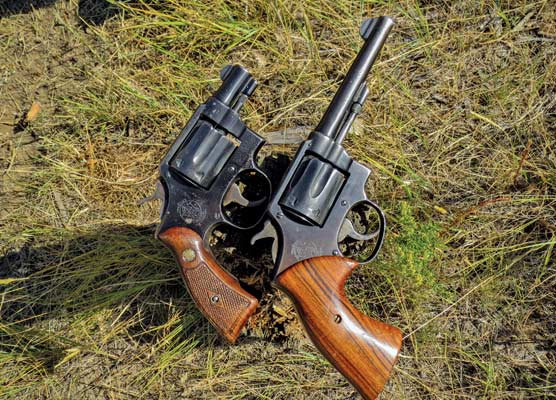Move
You Have To Practice This Critical Tactic
One of your first reactions to a threat, or danger of almost any kind, is usually to move. The threat is trying to strike, cut or shoot you. You move to create distance, putting ground between you and the threat. Putting ground between danger and you creates time. With time you can evaluate and make decisions on what to do next. While backing up you see cover, and move to get the protection it provides. Once behind cover it may be necessary to keep moving, maintaining your position behind cover.
If there are family members between you and the threat; it’s almost as if they’re using your family for cover. You move to get a clear angle of attack, repositioning to engage the threat without risking injury to family, bystanders or the possibility of shooting into the neighbor’s house.
The situation may call for you to move fast, without regard to technique. You get to where you need to be and then consider other options — which may or may not call for shooting. At first opportunity you’re disengaging and moving to escape. There’s an active killer, shooting everyone in sight. Moving fast makes it harder for them to hit you. Conditions may call for you to engage the threat while moving, a skill that must be cultivated. But learn it now, not when it’s happening.
Practice
You can move smoothly and shoot accurately, or you can move fast and not shoot. Moving fast and shooting is not a good idea. Remember, you’re responsible for every shot fired. To shoot accurately while moving, your weight transfer must be smooth. From the hips and up the body must remain stable and indexed on-target, just as if you were standing still and firing. Once you twist the hips it’s difficult to stay on-target. This is especially true with rifle, carbine or shotgun.
Your stationary fighting stance should have the feet shoulder width apart, with your strong side foot slightly behind the support foot and your upper body slightly bladed. To move to the right you step with the right foot first. You feel with the toes, ensuring there’s solid ground, then commit the weight and reposition the opposite foot. One step always means moving both feet. After each step you wind up in a fighting stance.
To move left step with the left foot first. Movement to the rear starts with the “rear” foot — the strong side foot. To move forward step with the support side foot first. To move multiple steps simply repeat the same footwork again and again. This shuffle type movement maintains the upper body’s index, and if you do feel a hole, curb or obstruction you reposition the foot and continue moving. It also allows you to change direction easily and efficiently.
Action Beats Reaction
Ask most people if action beats reaction and their answer is, “Yes.” This is true, but only on a simplistic level. Fighting is more like a chess game. White might move first, but that doesn’t guarantee victory.
One of the big reasons to move is because it forces the threat to react to you. Usually, you’re responding to the threat’s attack. They are acting; you’re reacting. As soon as possible you must force them to react to you. Moving does this. You move — now the threat is reacting. You have control, and a little more time to figure out what to do next. You act again, and again, continuing to put pressure on the threat until the fight is over.
Your “reaction” — moving — may achieve a psychological stop. You move, creating distance and getting behind cover. At the same time you’re drawing your pistol and issuing verbal commands to the threat: “Stop! Don’t come any closer!” You’re not the “victim” they anticipated and they decide not to continue the attack.
Moving in response to danger isn’t instinctual. When the sudden and unexpected happens our natural response is to freeze in place until we gather the details about what’s going on. Our instinct, once we decide to fight, is to root to the ground. The beauty of firearms is you can be moving and still be “hitting” the threat.
Understanding the reasons for moving should help motivate you to practice. Repetition is necessary to develop your skill, especially the ability to shoot while moving. Practice also helps ensure when the time comes you’ll be moving. Danger = move! This should become almost a natural reaction.







